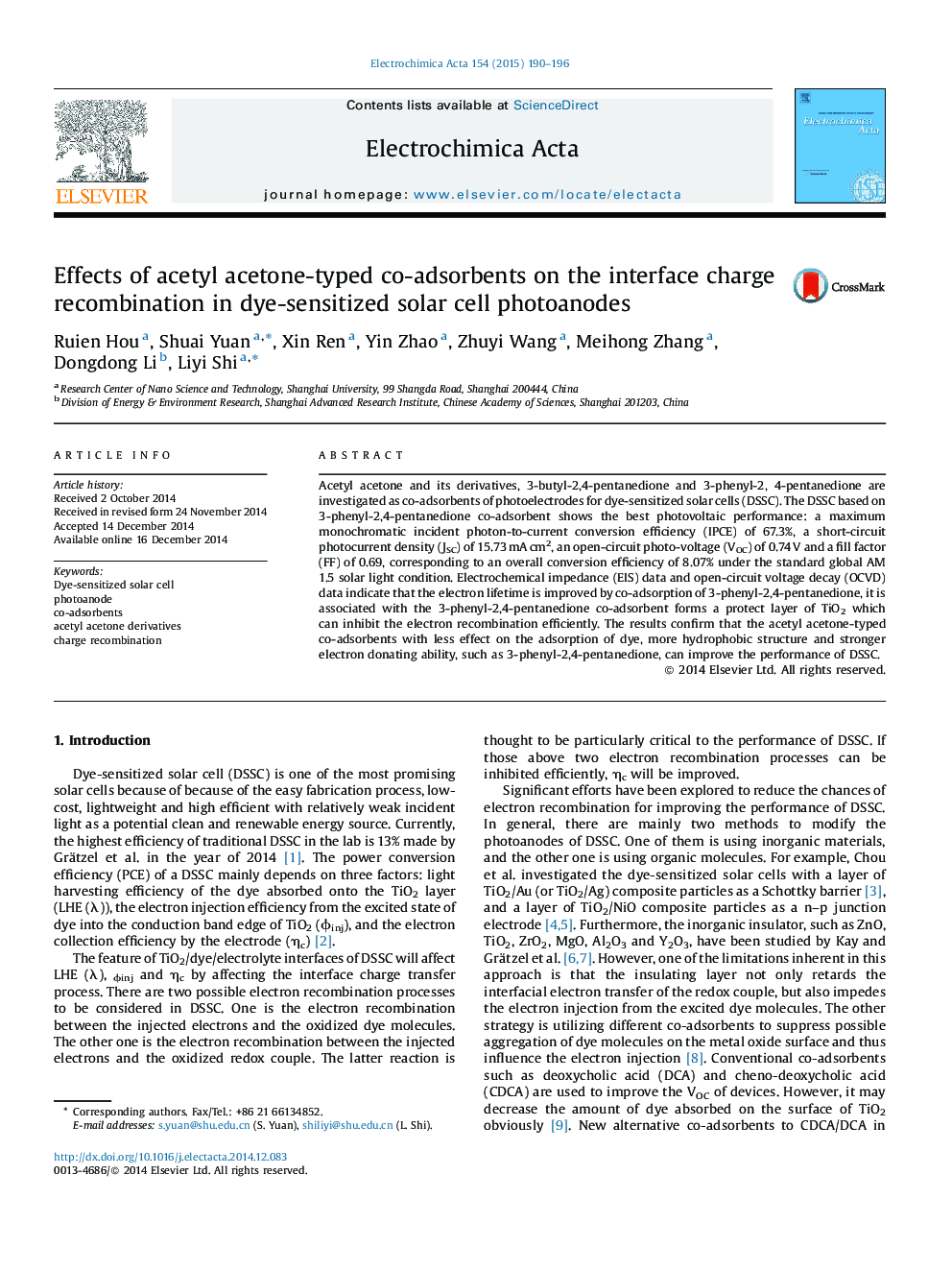| Article ID | Journal | Published Year | Pages | File Type |
|---|---|---|---|---|
| 184681 | Electrochimica Acta | 2015 | 7 Pages |
Acetyl acetone and its derivatives, 3-butyl-2,4-pentanedione and 3-phenyl-2, 4-pentanedione are investigated as co-adsorbents of photoelectrodes for dye-sensitized solar cells (DSSC). The DSSC based on 3-phenyl-2,4-pentanedione co-adsorbent shows the best photovoltaic performance: a maximum monochromatic incident photon-to-current conversion efficiency (IPCE) of 67.3%, a short-circuit photocurrent density (JSC) of 15.73 mA cm2, an open-circuit photo-voltage (VOC) of 0.74 V and a fill factor (FF) of 0.69, corresponding to an overall conversion efficiency of 8.07% under the standard global AM 1.5 solar light condition. Electrochemical impedance (EIS) data and open-circuit voltage decay (OCVD) data indicate that the electron lifetime is improved by co-adsorption of 3-phenyl-2,4-pentanedione, it is associated with the 3-phenyl-2,4-pentanedione co-adsorbent forms a protect layer of TiO2 which can inhibit the electron recombination efficiently. The results confirm that the acetyl acetone-typed co-adsorbents with less effect on the adsorption of dye, more hydrophobic structure and stronger electron donating ability, such as 3-phenyl-2,4-pentanedione, can improve the performance of DSSC.
Graphical abstractFigure optionsDownload full-size imageDownload as PowerPoint slide
